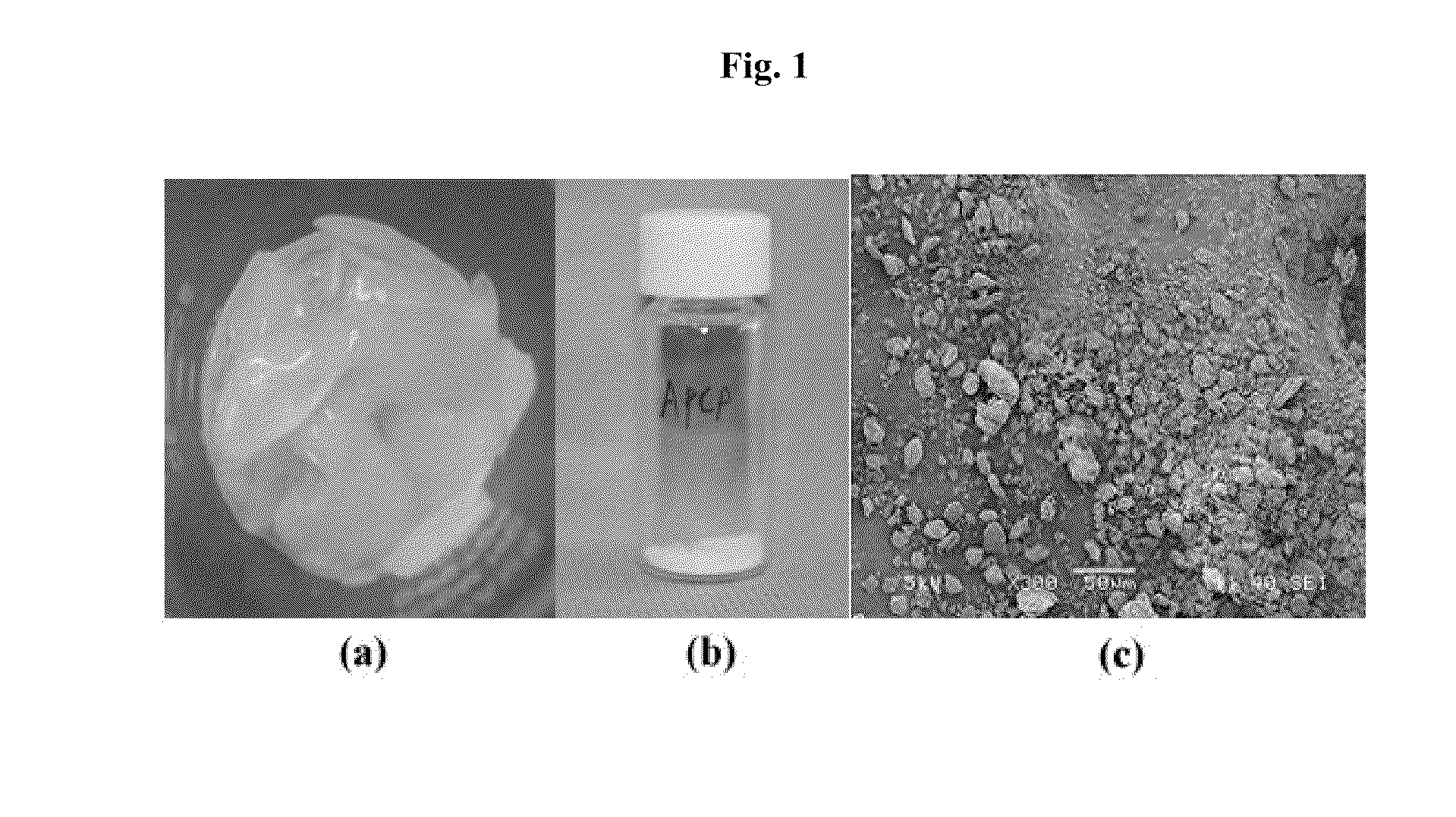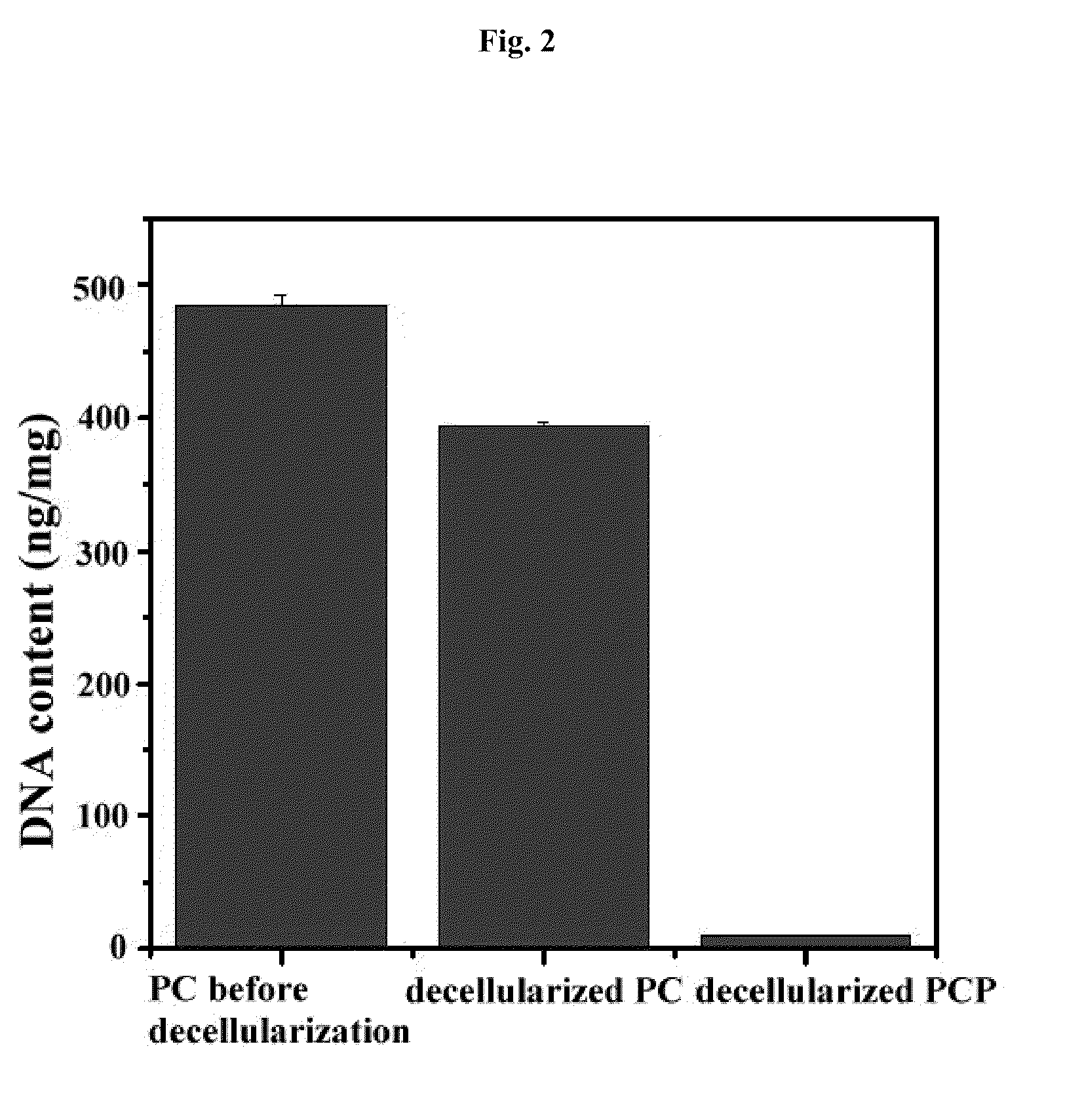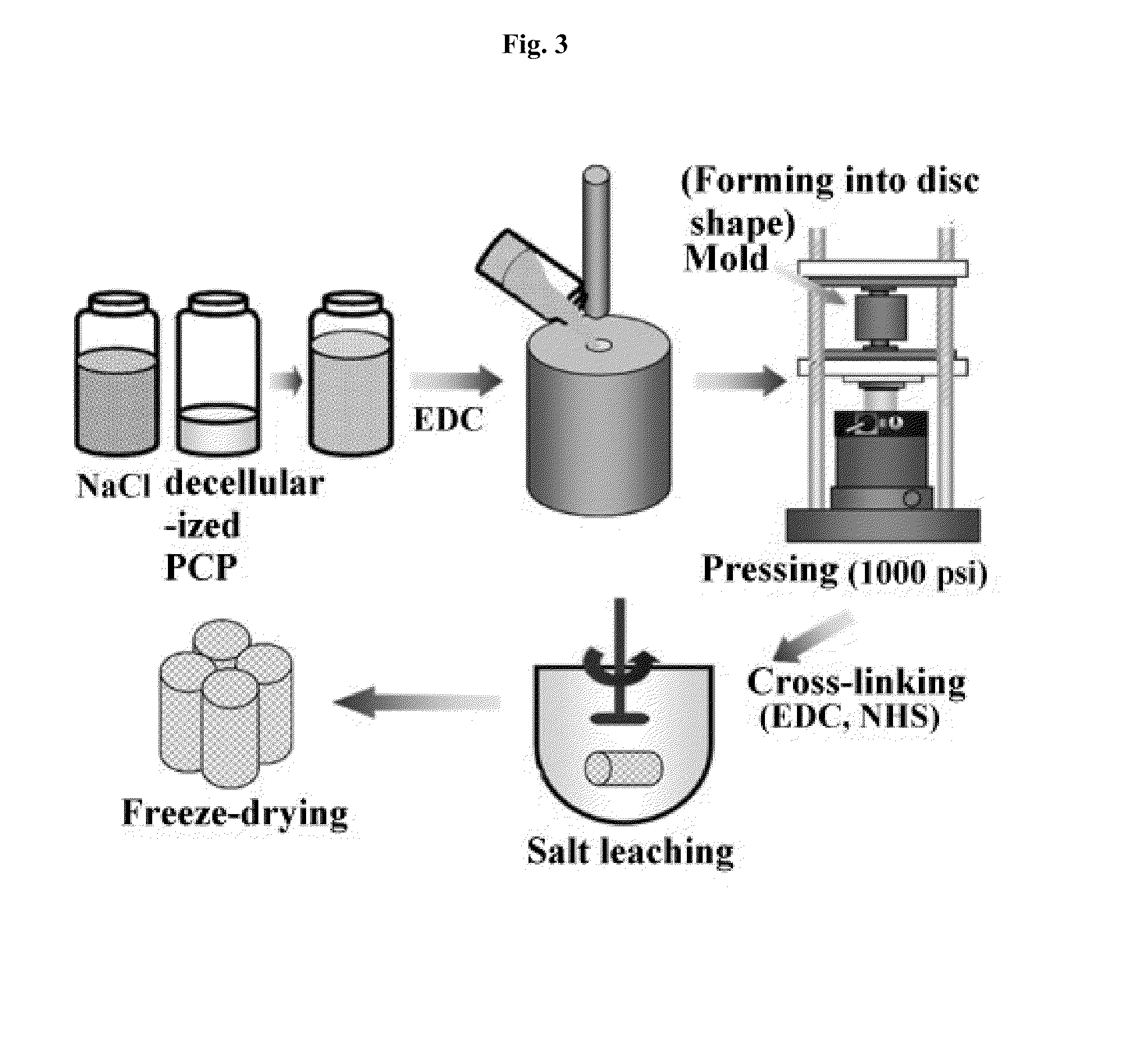Method for manufacturing a porous three-dimensional scaffold using powder from animal tissue, and porous three-dimensional scaffold manufactured by same
a three-dimensional scaffold and animal tissue technology, applied in the field of manufacturing a porous three-dimensional scaffold, can solve the problems of affecting the quality of patients' lives, unable to maintain the vitality of blood clots (including stem cells) in cartilage repair, and unstable physical properties of blood clots formed in this technique, etc., to achieve the effect of regenerating hyaline cartilage tissue, enhancing the effect of cartilage regeneration
- Summary
- Abstract
- Description
- Claims
- Application Information
AI Technical Summary
Benefits of technology
Problems solved by technology
Method used
Image
Examples
reference example 1
Isolation of Porcine Cartilage
[0063]In order to isolate porcine cartilage, pig cartilage was purchased and utilized from a facility satisfying standards referred to EN 12442 “Animal tissues and their derivatives utilized in the manufacture of medical devices, Part 1; Analysis and management of risk, Part 2; Controls on sourcing, collection and handling”.
[0064]Cartilage tissue was isolated from the porcine cartilage and cut into pieces (about 20×30 mm) and then, washed 3 times for 10 minutes by a saline solution. The resulting cartilage fragment was immersed in PBS solution containing antibiotic-antimycotic agents and finally stored at −80° C. in an ultralow-temperature refrigerator (See FIG. 1(a)).
example 1
Pulverizing Porcine Cartilage
[0065]The cartilage fragment washed out was pulverized by a pulverizer that is commercially available and well-known to those skilled in this arts (Hood Mixer HMF-505, Hanil Co. Ltd. Korea) to reduce its size to about 2×2 mm. The pulverized cartilage fragment was freeze-dried and freeze-dried cartilage fragment was finally reduced to powder having its size of about 10 μm by a freezing mill (JAI, JFC-300, Japan).
[0066]1-1. Morphological Analysis of Porcine Cartilage Powder
[0067]The resulting porcine cartilage powder was morphologically analyzed under a scanning electron microscope. The porcine cartilage powder prepared in Example 1 was fixed by 2.5% glutaraldehyde for about 1 hour, and washed by phosphate buffer solution. The sample was dehydrated, dried and observed under a microscope (JEOL, JSM-6380, Japan; 20 KV) to measure the size and shape of the powder. The powder was observed in the size of about 10 μm (FIG. 1(c)).
example 2
Decellularization and Characterization of Porcine Cartilage Power
[0068]2-1. Decellularization of Porcine Cartilage Power
[0069]In order to remove chondrocytes and genetic components and obtain pure extracellular matrix, decellularization process was performed as below.
[0070]The porcine cartilage powder prepared in Example 1 was added to 1 l of 0.1% SDS (sodium dodecyl sulfate, Bio-Rad, USA) (per 10 g of the porcine cartilage powder) and stirred at 100 rpm for 24 hours. After treating SDS, the resultant was washed 5 times by tertiary distilled water at 100 rpm for 30 minutes.
[0071]In order to precipitate the cartilage powder for exchanging washing solution, the cartilage powder was centrifuged at 10,000 rpm for 1 hour with an ultracentrifuge (US-21SMT, Vision, Korea).
[0072]200 ml of 200 U / ml DNase (Sigma, USA) was added to the cartilage powder and stirred at 100 rpm at 37° C. for 24 hours. The resultant was washed 5 times by tertiary distilled water at 100 rpm for 30 minutes. The wash...
PUM
| Property | Measurement | Unit |
|---|---|---|
| temperature | aaaaa | aaaaa |
| pH | aaaaa | aaaaa |
| size | aaaaa | aaaaa |
Abstract
Description
Claims
Application Information
 Login to View More
Login to View More - R&D
- Intellectual Property
- Life Sciences
- Materials
- Tech Scout
- Unparalleled Data Quality
- Higher Quality Content
- 60% Fewer Hallucinations
Browse by: Latest US Patents, China's latest patents, Technical Efficacy Thesaurus, Application Domain, Technology Topic, Popular Technical Reports.
© 2025 PatSnap. All rights reserved.Legal|Privacy policy|Modern Slavery Act Transparency Statement|Sitemap|About US| Contact US: help@patsnap.com



